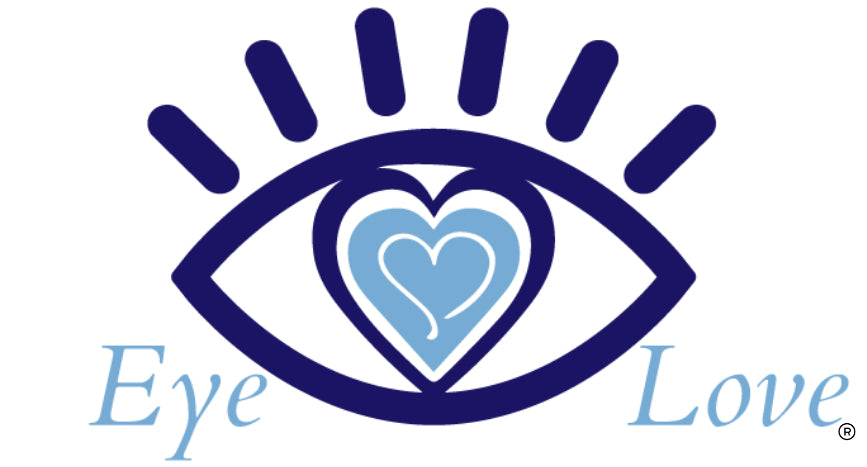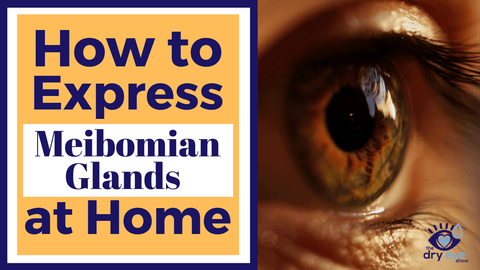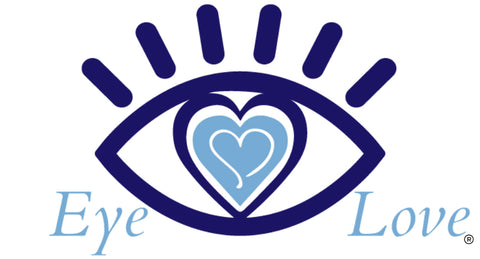What is a Meibomian Gland?
Meibomian ("my-BOH-mee-an") glands are large sebaceous oil glands that line the edge of the eyelids alongside the eyelashes. Meibomian glands produce an oil called meibum that secretes onto the surface of the eye every time we blink. This oil is important for your eye health, as it keeps your eyes lubricated and prevents your tears from evaporating too quickly. Tears are made up of meibum, water, and mucus. The meibum oil helps to prevent the water layer from drying out. There are between 20 to 30 meibomian glands in the lower eyelid and 25 to 40 meibomian glands in the upper eyelid.
Can Issues Occur with the Meibomian Glands?
Issues with the meibomian glands are very common, yet some people may not realize they have problems. It is often the result of a blockage of the meibomian glands, causing them to be unable to secrete oil into the tears. This condition can be associated with dry, irritated eyes because the oil blockage causes tears to dry up too quickly.
Meibomian gland issues are often the result of eyelid inflammation, which describes an inflammatory and sometimes infectious condition in the eyelids. One form of eyelid inflammation impacts the front part of the eyelid and lashes and can cause the eyelids to become red and inflamed. This can also cause crusty eyelashes and is often caused by staphylococcus bacteria. If the problem affects the back of the eyelids, the glands may be the problem.
Changes to the meibomian glands or the amount or quality of the meibum oil can lead to eye and eyelid issues. Most commonly, a combination of factors contribute to irritated eyes.
The number of meibomian glands that a person has decreases as we age. Ethnicity also plays a role. In addition to your age and ethnicity, people who wear contact lenses are also more likely to suffer from inflammatory eyelid conditions.
There are a number of common medical conditions linked to eyelid inflammation including:
- High cholesterol and triglycerides
- Inflamed or damaged eyelids or cornea
- Allergic eye conditions
- Bacterial infection
- Autoimmune disease
Some medications can interfere with oil production, including:
- Estrogen replacement therapy
- Acne medication and anti-aging creams
- Drugs that reduce androgens
As eyelid inflammation progresses, you will likely notice more and more symptoms begin to arise. These may include burning, itching, irritation, and dryness in and around the eye. It can even feel like you have a small particle, like dust or sand, in your eye. You may also notice your eyelids become inflamed, irritated, and therefore red in color. Some people also experience moments of blurred vision, which may come and go.
Symptoms may worsen if you spend a lot of time on the computer, or if the air in your house or place of work is dry from air conditioning or heating. Many people who experience eyelid inflammation complain about their symptoms when stepping out of a hot shower. They say that after a shower, their eyes become very red and painful. This is due to the humidity in the bathroom, which causes the tear film to quickly become unstable. This can result in a drying out of the eye, specifically the cornea.
How Long Does Eyelid Inflammation Last?
If left untreated, this condtion can become more severe and alter the quality of your life. The cornea can become desiccated and dry, potentially leading to the development of scar tissue. Chronic inflammation can cause the meibomian glands to atrophy, which can make it difficult for them function normally again.
Can Meibomian Glands Regenerate?
Once glands have atrophied, we don’t usually think of them as having the ability to regenerate (unfortunately). However, there has been some recent promising research into this topic. A study in the British Journal of Ophthalmology has found that probing meibomian glands in patients who have this condition could lead to the growth and regeneration of meibomian gland tissue.
In addition to this, a small ongoing study has also shown that LipiFlow, used over time, may help to regenerate the meibomian glands. This recent retrospective, observational study has revealed that 70% of those patients treated with LipiFlow showed a reversal in their meibomian gland atrophy vs. those patients who had not undergone LipiFlow. In these patients where improvement was noted, small positive changes were seen in the glands. Researchers also found long term improvements in tear break up time, tear osmolarity, and corneal staining.
How to Unclog Meibomian Glands | How to Express Meibomian Glands at Home
Methods of supporting the health of the eyelids will vary based on the severity of the condition and the severity of any blockages. When inflammation is severe, it’s best for meibomian gland expression to be performed by a doctor, optometrist or ophthalmologist, who has experience doing so. For milder cases, there are a couple things you can do at home to help unclog the meibomian glands. For some people, one type of treatment will be enough, but for others, a complete regimen is needed to alleviate their symptoms. Here is a list of things you can do to unclog your meibomian glands at home:
Apply a Warm Compress
Most doctors recommend applying a warm compress to the eyes every day, followed by a lid hygiene routine. Although you can use a washcloth and hot water, that’s super tedious and never works well. We recommend purchasing the MediViz Warm Compress Eye Mask with Removable Cover and heating it in the microwave for 20 seconds. Place it over the eyes and keep the compress on the eyes for 10-15 minutes. Adjust the heat as necessary to suit your comfort levels, however keep in mind that the heat is what is causing the blockages to dissolve. You can also gently massage the mask into your eyes to stimulate the glands during compression, just make sure to do this gently. We recommend using a warm compress after removing makeup but before your eyelid hygiene regimen (more on this below).
Lid hygiene
Lid hygiene is the number one most important step! Here are some of the main steps:
Remove makeup
If you wear makeup, it’s important to make sure you clean the products off your eyes every night before bed because it can contribute to the clogging of the meibomian glands. To make sure your skin is clean, we recommend using the MediViz Tea Tree Eyelid Wipes or MediViz Regular Wipes to remove your makeup. These are specially formulated for inflamed eyes and eyelids.
Cleanse face
After removing your makeup, it’s time to cleanse your face. Use the Heyedrate Tea Tree Soap, which will support healthy and eyelids. To use, wet your face and hands with warm water. Lather the soap in your hands, and massage the lather onto your skin and closed eyelids in a gentle circular motion. Rinse off the soap and pat your face dry with a soft towel. Repeat every morning and evening.
Use a Lid and Lash Cleanser
Using a lid and lash cleanser can make all the difference if you have eyelid inflammation. After you’ve used your warm compress, this eyelid cleanser should be used for both gland expression and hygiene. To use it, spray a Q-tip with the Heyedrate Lid & Lash Cleanser until damp. Looking in the mirror with one eye closed, roll the damp Q-tip on your eyelid in a downward motion, starting in the inner corner of the eye and making your way to the outer corner. Repeat this on the bottom lid by keeping your eye closed and rolling up toward the lash line.
Once you’ve done both the top and bottom lids, use your damp Q-tip (spray more Heyedrate Cleanser if it’s no longer damp) and run it across the lid margin or waterline of the upper and lower lashes. The last step is to close your eyes and spray your eyelids with the Heyedrate Lid & Lash Cleanser and let it dry. Repeat once or twice per day!
Omega-3 Supplements
Omega-3 fatty acids have been shown to normalize the meibomian glands by improving the gland oil consistency and quality. Try the Heyedrate Omega 3 for Eye Health, which works from the inside of your eyes to the outside to address the underlying cause of irritation.
Tips on Meibomian Gland Expression:
- Do this once a day. It is not necessary to do it more than that.
- There are a couple of different options on what to use:
Using a Q-tip
- Use Heyedrate Lid & Lash Cleanser by Eye Love and spray on the Q-tip so you know that it's damp.
- Look in the mirror.
- Start on one corner of your eye and roll down and across your entire eyelid.
- Use a little pressure, but don't put too much.
- Then, on the bottom lid, keep your eye closed and roll up.
- The bottom lid's a bit tougher, so if you want you can just press right below that lower lash line all the way across.
- Once you've done that, make sure your Q-tip is damp with Heyedrate Lid & Lash Cleanser and run it across the lid margin to get all of the oil out.
Using your finger
- You're going to do essentially the same thing...
- Start on one corner and roll down all across your eyelid.
- You can also just press the eyelid with your fingertip.
- Then, using the Heyedrate Lid & Lash Cleanser on a cotton ball, cleanse your eyelids and let it dry.
We, Eye Love, LLC, are a participant in the Amazon Services LLC Associates Program, an affiliate advertising program designed to provide a means for us to earn fees by linking to Amazon.com and affiliated sites. MediViz and Heyedrate branded products are made by our company, Eye Love, but we truly believe that our products are the best on the market! It is important to know that our products are not intended to diagnose, treat, cure, or prevent any disease.
References:
https://www.ophthalmologytimes.com/article/exploring-reversibility-meibomian-gland-atrophy












